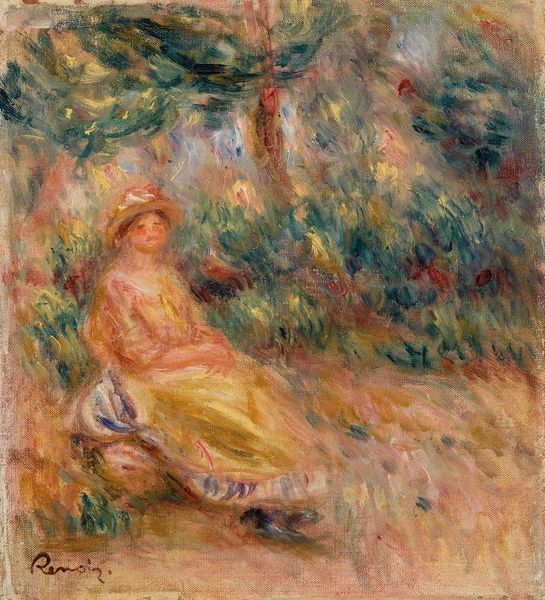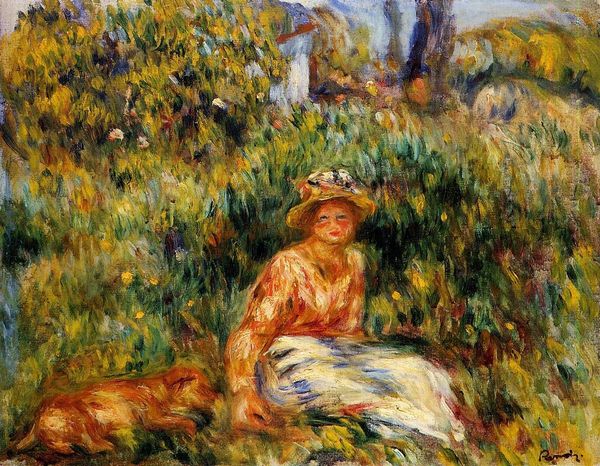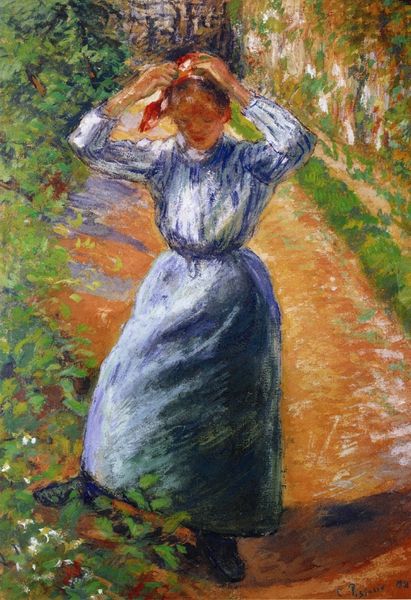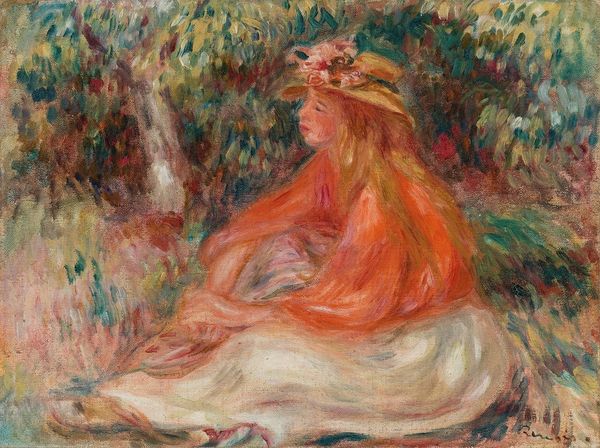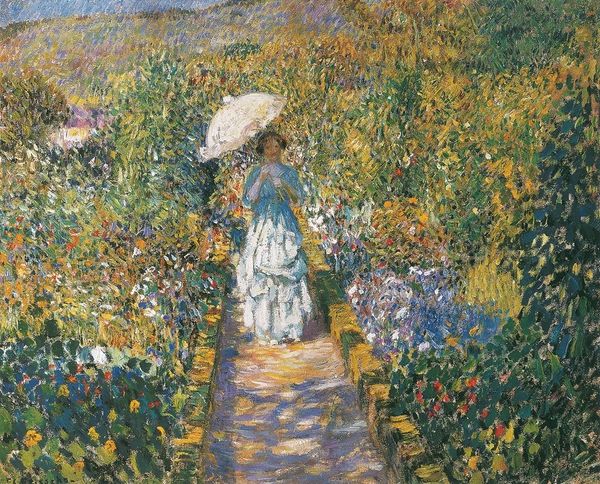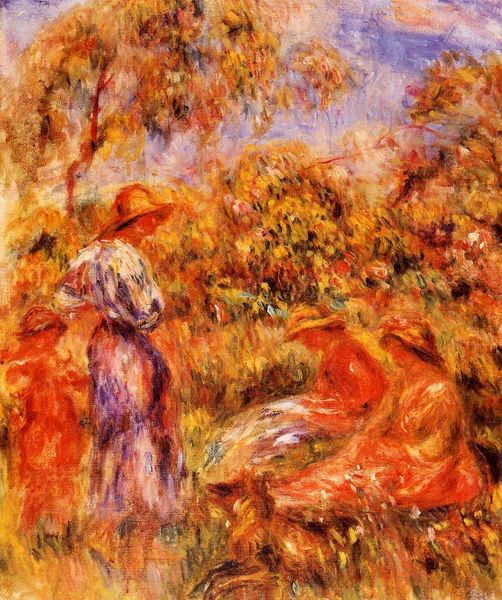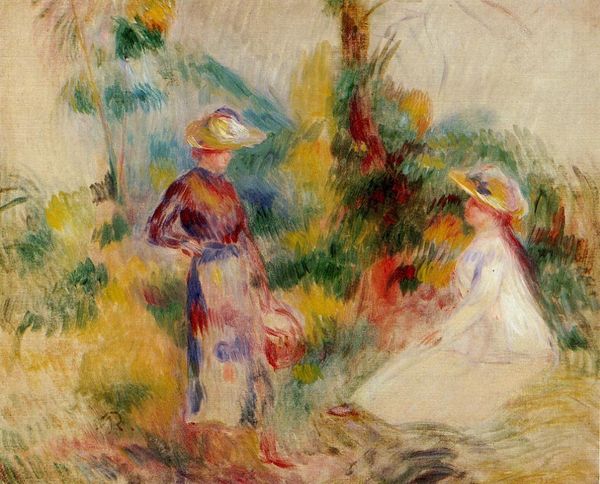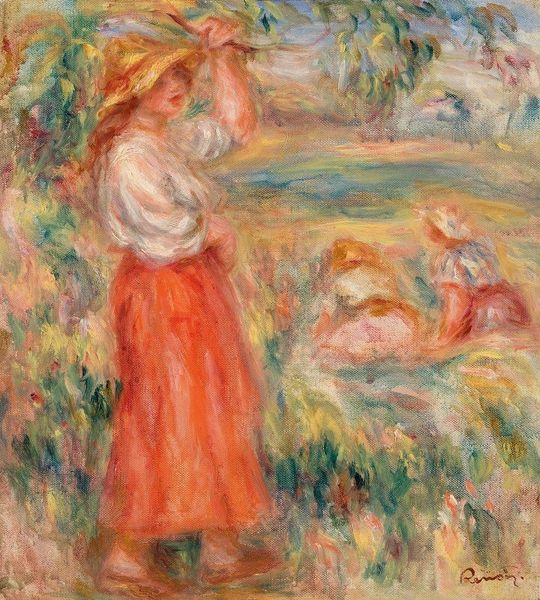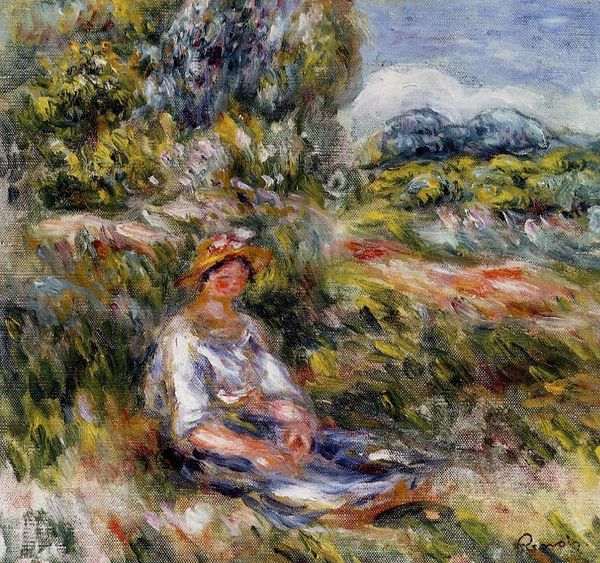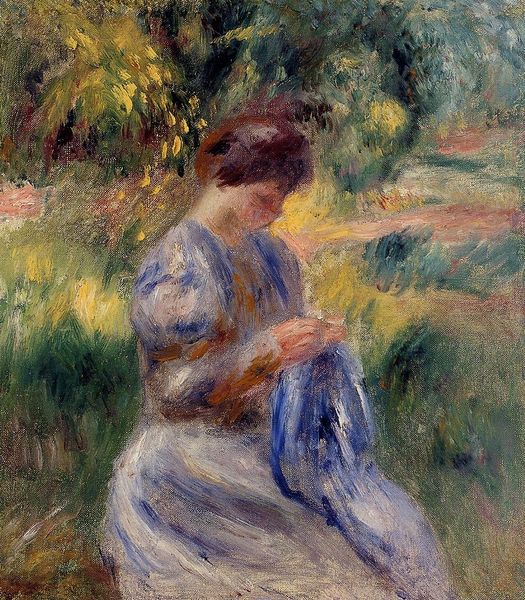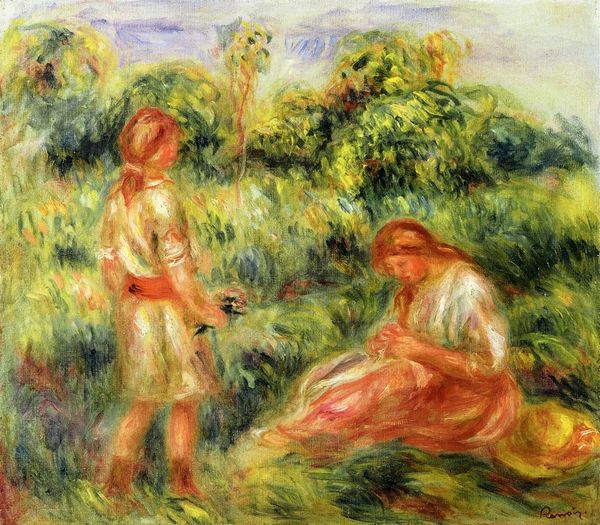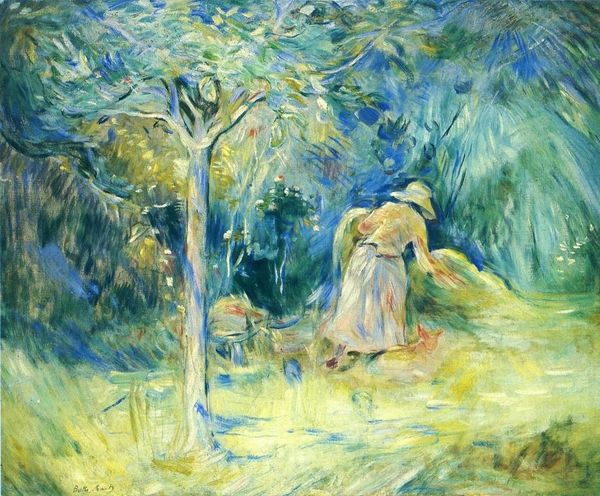
Copyright: Public Domain: Artvee
Curator: As we stand before this canvas, we're observing "Landscape with Woman in Pink and White," a radiant oil painting created by Pierre-Auguste Renoir around 1916. It's exemplary of his late impressionistic style. Editor: My initial reaction is one of gentle warmth. The composition is awash in soft hues, mainly pinks and greens, that evoke a serene and somewhat idealized atmosphere. The brushstrokes are so fluid that the landscape almost seems to be breathing. Curator: The late paintings, like this, can be interpreted in terms of Renoir’s complex relationship with changing social structures and gendered expectations during the late 19th and early 20th century. The rendering of the woman almost seems to re-establish certain conventional modes. What do you think about that? Editor: It’s true. Renoir did face criticism for seemingly abandoning the avant-garde boldness of early Impressionism for a style some viewed as more palatable to the established art market. I do find that while Renoir seemed intent on situating his women within certain class structures, he simultaneously disrupts that by presenting a sort of generic archetypical 'feminine.' The blurred faces seem like Renoir wasn't interested in portraiture itself, but the visual of the model with specific clothing, in that setting. Curator: Indeed. We must also consider that these paintings offered a romantic escape for a Europe deeply scarred by World War I. The idyllic pastoral settings and beautiful women became symbols of hope and rejuvenation. Renoir's art consistently focused on intimacy and fleeting beauty, despite broader shifts in culture and social mores. Editor: I agree that the social function and emotional impact of this painting become clearer in this period. Though it does reflect the realities of a changing landscape, the painting seems to reject the contemporary struggles of everyday existence for many marginalized people in early twentieth-century society. In effect, Renoir painted a counter-narrative of the idyllic at the expense of all else. Curator: Viewing “Landscape with Woman in Pink and White” through the dual lens of artistic intention and societal needs offers us rich perspectives on Renoir’s legacy and enduring appeal. Editor: Ultimately, the painting becomes a site of discourse and deliberation about the relationship between beauty, trauma, hope, and the complexities of their sociohistorical implications in Renoir’s moment in history.
Comments
No comments
Be the first to comment and join the conversation on the ultimate creative platform.
